awardby | the Recording Academy2015Technical Grammy Award
March 1, 2025
Ray Kurzweil received the 2015 Technical Grammy Award on February 7, 2015 for outstanding achievements in the field of music tech.
One of his primary inventions paved the way for re-creating acoustic instruments with electronic equivalents.
The Technical Grammy Award is a Special Merit Award presented by vote of the National Academy of Recording Arts & Sciences Trustees, for contributions of outstanding technical significance to the recording field.
Grammy Foundation | Technical Grammy Award recipient Ray Kurzweil
“Ray Kurzweil is a best selling author, futurist, computer scientist and inventor,” notes the Grammy Foundation. “He is a current director of engineering at Google.
“Kurzweil is credited as the principal innovator of omni-font optical character recognition, text to speech synthesis and speech recognition technology.
“He founded Kurzweil Music Systems in 1982 and in 1984 introduced the Kurzweil K250, the first computer based instrument that could realistically re-create the musical response of a grand piano and other orchestra instruments. PBS featured Ray Kurzweil in the hit series They Made America. Ray Kurzweil’s early 1980s successes included synthesizers he engineered with the creative input of musician Stevie Wonder.”
on the web | essentials
Grammy Foundation | YouTube channel
Grammy Foundation | Technical Grammy Award
Grammy Foundation | Special Merit Awards: class of 2015
Grammy Foundation | Ray Kurzweil to receive Technical Grammy Award
Technical Grammy Award acceptance remarks
by Ray Kurzweil | February 7, 2014
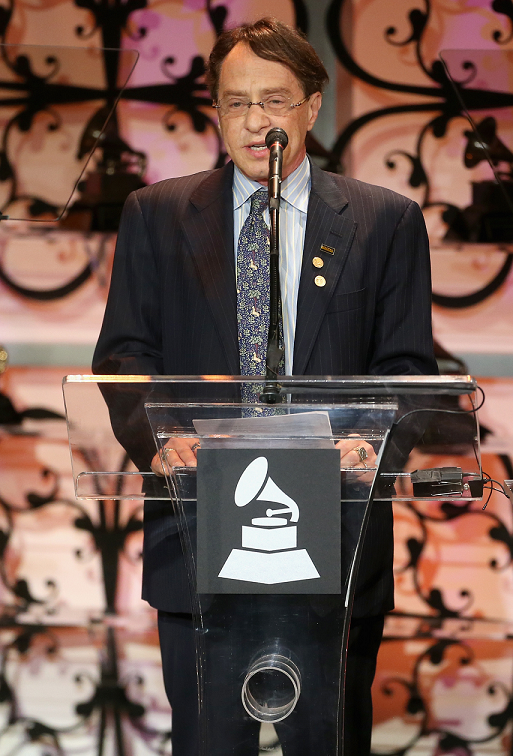
(credit: WireImage)
Music is the only artistic expression common to every human civilization. Some primitive cultures draw pictures, others dance, but every culture that we’ve ever discovered makes music.
Moreover, we are the only species that creates music with rhythm, melody, and harmony. No other animal can keep a beat.
Music is our common human bond. Society has always used the most advanced technology available to it to create music, from the woodworking crafts of antiquity to the intelligent digital technology of today.
It is therefore a special privilege and honor to receive this recognition for music technology from the National Academy of Recording Arts and Sciences. An inventor is often described as a crazy person who disappears into his or her basement and emerges years later with a breakthrough. Actually, it is a group of crazy people who disappear into their basement.
So I would like to recognize and thank my crazy collaborators. My lovely wife Sonya, also known as Dr. Sonya to her child therapy patients, who has been my partner for forty years in both love and work, which Freud tells us are the two worthwhile things in life.
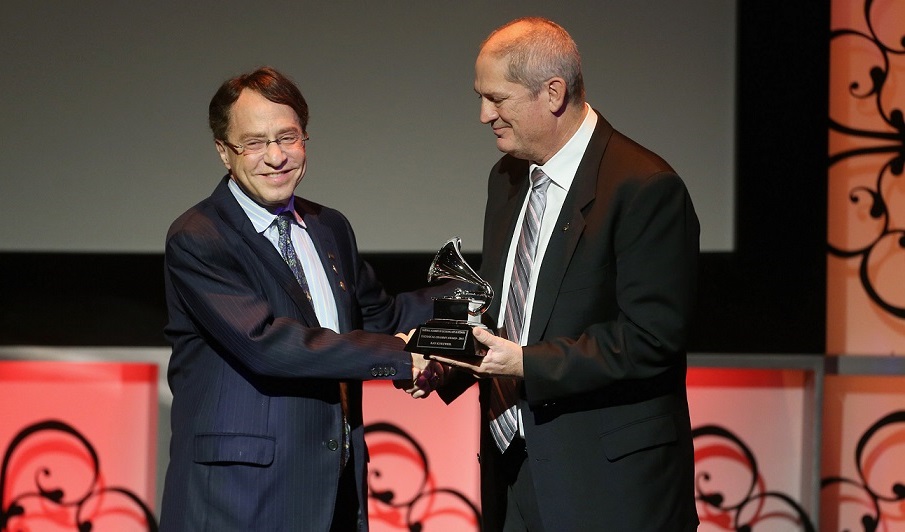
Record producer Mike Clink and honoree Ray Kurzweil at the 57th Grammy Awards, Special Merit Awards ceremony on February 7, 2015. Kurzweil received the Technical Grammy Award. (credit: WireImage )
My mother, who supported my early explorations when no one thought they made sense. My father, who was a brilliant musician, and with whom I had many engaging discussions on how to combine music and computers. My children, Ethan and Amy, and daughter in law Rebecca, who taught me everything I know.
Stevie Wonder, who challenged me to combine digital technology with acoustic sound, and who was our musical advisor. Aaron Kleiner, my best friend and business partner, who cofounded Kurzweil Music with me.
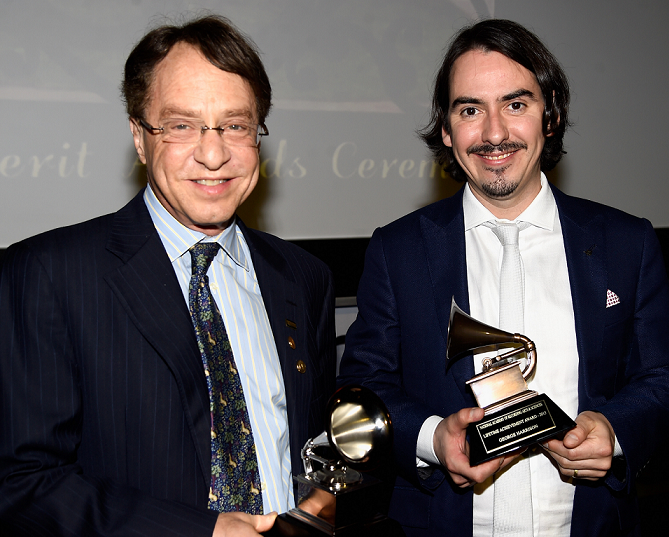
Ray Kurzweil with Dhani Harrison, George Harrison’s son, who accepted the Grammy Lifetime Achievement Award for his late father. (credit: WireImage)
And last but not least the brilliant scientists and engineers who worked with me including:
Bob Chidlaw, Larry Bodony, Hal Chamberlin, Tim Thompson, Chet Graham, Bill Gardner, Ralph Muha, Joe Ierardi, Jennifer Hruska, Chris Martirano, Robert Hartford, Chris Perkins, John Teele, Rick Cohen, Mike Raffa, Steve Lee, John Richmond, Fran Rodriguez, Mashi Hasu, YG Lim, YT Kwon, Dee Hall and Wendy Fortin.
Thank you so much for this honor.
— Ray Kurzweil
related viewing:
Grammy Foundation | 2015 Special Merit Awards ceremony highlights video
“The Recording Academy honored recipients of the 2015 Lifetime Achievement Award, Trustees Awards, Technical Grammy Award, and Music Educator Award at the Special Merit Awards ceremony & nominees reception on February 7, 2015. Receiving the Lifetime Achievement Award were the Bee Gees, Pierre Boulez, Buddy Guy, George Harrison posthumously, Flaco Jiménez, the Louvin Brothers posthumously, and Wayne Shorter.
“The Trustees Award honorees were Richard Perry, Barry Mann & Cynthia Weil, and George Wein. Ray Kurzweil was honored with the Technical Grammy Award, and Jared Cassedy was honored with the Music Educator Award.” — Grammy Foundation
Grammy Foundation | Special Merit Awards photo gallery 2015: Ray Kurzweil and record producer Mike Clink
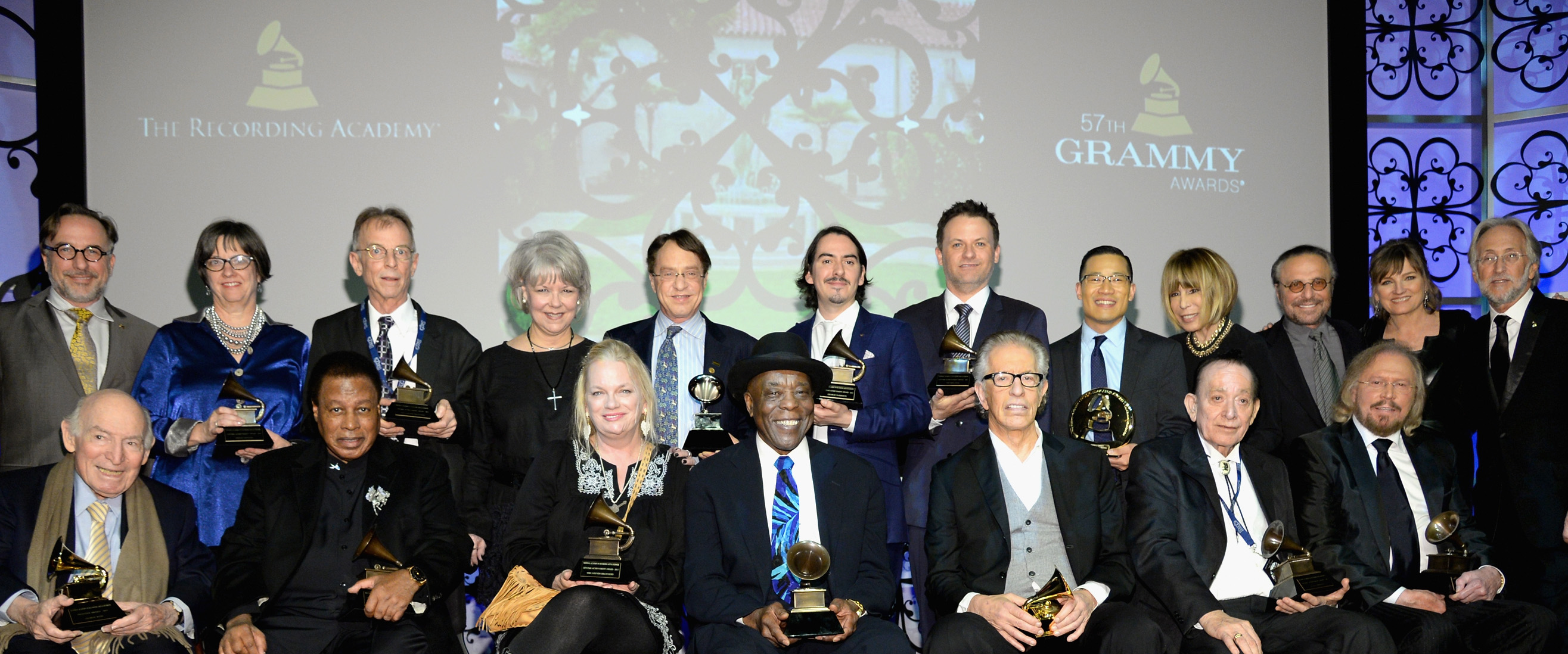
(credit: WireImage)
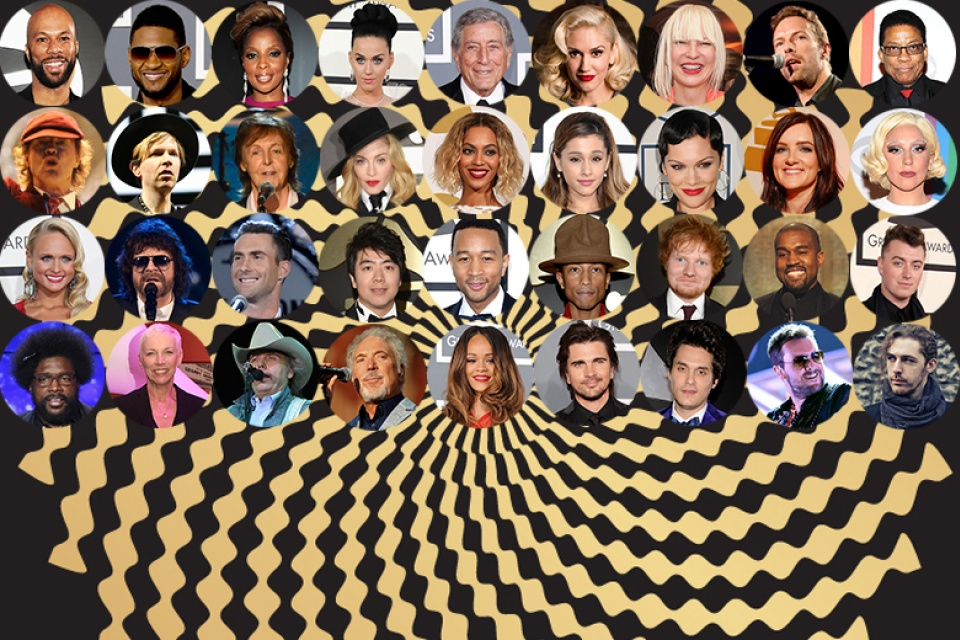
(credit: Grammy Foundation)
Kurzweil Collection | The founding of Kurzweil Music Systems
comments by Ray Kurzweil
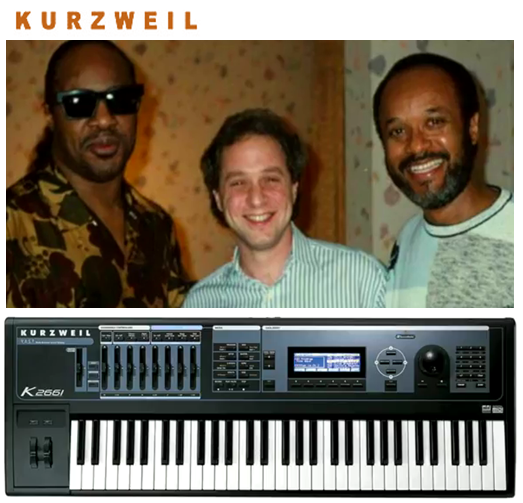
Ray Kurzweil’s early 1980s successes included sythesizers he engineered with the creative input of musician Stevie Wonder. (credit: Kurzweil Technologies)
When I met Stevie Wonder in 1976 we gave him the first Kurzweil Reading Machine for the Blind, it began what is now a thirty year friendship.
Stevie Wonder and I collaborated to create the first computerized musical instrument that could realistically recreate the piano and other orchestral instruments.
On one of my visits with Stevie Wonder at his Los Angeles recording studio in 1982, he lamented the state of affairs in the world of musical instruments.
On the one hand, there was the world of acoustic instruments, such as the piano, violin and guitar, which provided the rich complex sounds of choice for most musicians. While musically satisfying, these instruments suffered from a panoply of limitations.
Most musicians could play only one or two different instruments. Even if you could play more than one, you couldn’t play more than one at a time.
Most instruments only produce one note at a time. There were very limited means available to shape the sounds. On the other hand, there was the world of electronic instruments, in which these control limitations disappeared.
In the computerized world, you could record one line of music on a sequencer, play it back and record another sequence over it, building up a multi-instrumental composition line by line. You could edit wrong notes without replaying the entire sequence.
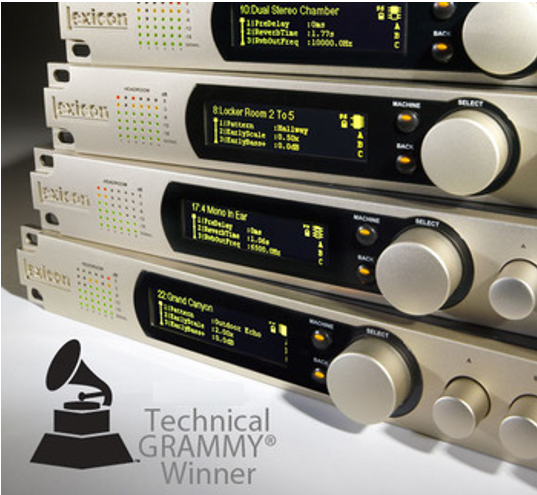 You could layer multiple sounds, modify their sonic characteristics, play songs in non-real time, and use a great variety of other techniques. There was only one problem.
You could layer multiple sounds, modify their sonic characteristics, play songs in non-real time, and use a great variety of other techniques. There was only one problem.
The sounds you had to work with in the electronic world sounded very thin, rather like an organ, or an electronically processed organ.
Wouldn’t it be great, Stevie mused, if we could use the extraordinarily flexible computer control methods on the beautiful sounds of acoustic instruments? I thought about it and it sounded quite doable, so that meeting constituted the founding of Kurzweil Music Systems, and defined its raison d’être.
My conversations with Stevie Wonder over the years culminated in his challenge to build a bridge between the acoustic world and the computer world of music. We decided to work together and founded Kurzweil Music Systems.
With Stevie Wonder as our musical adviser, we set out to combine these two worlds of music. In June of 1983, we demonstrated an engineering prototype of the Kurzweil 250 and introduced it commercially in 1984. The K250 is considered to be the first electronic musical instrument to successfully emulate the complex sound response of a grand piano and virtually all other orchestral instruments.
I sold Kurzweil Music Systems to a Korean company, Young Chang, the world’s largest piano manufacturer, in 1990. Kurzweil Music Systems remains one of the leading brands of electronic musical instruments in the world and is sold in 45 countries.
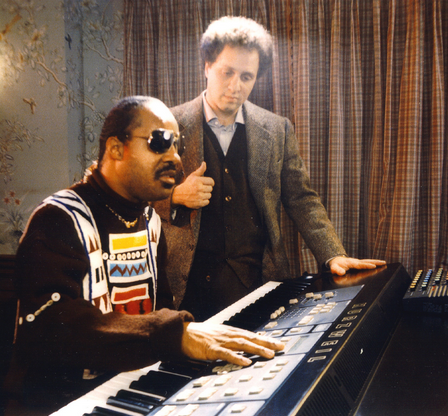
Historic photo of Ray Kurzweil with Stevie Wonder playing a Kurzweil 250 synthesizer in 1985. (credit: Kurzweil Technologies)
Kurzweil Collection | The inspiration for Kurzweil Music Systems
comments by Stevie Wonder
“I have been blessed to have known two people — Ray Kurzweil and Steve Jobs,” Stevie Wonder said, citing the contribution of both to enriching lives with technology. Ray Kurzweil and Wonder were presented with the National Association of Music Merchants Lifetime Achievement Award and the Music for Life Award for their pioneering efforts in creating the Kurzweil Music Systems synthesizers.
Stevie Wonder said, “The invention of print to speech technology was a breakthrough that changed my life.” According to Rolling Stone, “In 1983 with Wonder as a close friend and adviser, Kurzweil built the Kurzweil 250 synthesizer that revolutionized the music world with its uncannily realistic re-creations of acoustic orchestral instruments.”
related viewing from Stevie Wonder from Transcendent Man:
Transcendent Man | Stevie Wonder reflects on his thirty year friendship with Ray Kurzweil and what their lifetime creative partnership has meant to him.
related reading:
film | Transcendent Man
documentary | The Kurzweil Music Systems Story: It All Started with Ray
Kurzweil Music Systems | The Kurzweil Music Story: It All Started with Ray is the story of Stevie Wonder’s technical challenge to Ray Kurzweil that ultimately motivates the inception of Kurzweil Music Systems.
related reading:
Kurzweil Music Systems | main
Kurzweil Music Systems | YouTube channel
Wikipedia | Kurzweil Music Systems
Wikipedia | synthesizer
Sound on Sound | The synth designer who wants to live forever
Rolling Stone | When man and machine merge
National Association of Music Merchants | Lifetime Achievement Award
 National Association of Music Merchants | During the NAMM 2012 trade show, NAMM President and CEO Joe Lamond presents the Lifetime Achievement Award to Ray Kurzweil, recognizing excellence and leadership in the music industry.
National Association of Music Merchants | During the NAMM 2012 trade show, NAMM President and CEO Joe Lamond presents the Lifetime Achievement Award to Ray Kurzweil, recognizing excellence and leadership in the music industry.
Lamond also presented NAMM’s Music for Life Award to Stevie Wonder, honoring him for his “brilliant musical contributions and talent that is cherished by people all over the world.” Kurzweil noted, “Stevie and I collaborated to create the first computerized musical instrument that could realistically recreate the piano and other orchestral instruments,” leading Ray Kurzweil to found Kurzweil Music Systems in 1982.
“I have been blessed to have known two people — Ray Kurzweil and Steve Jobs,” said Wonder, and he cited the contribution of both to enriching our lives with technology.
In this video, Kurzweil explores the process of innovation with Lamond. Kurzweil shares his remarkable perspective and ideas with the audience, showing how breakthroughs can be applied to improving the music businesses and relate to future success.
related reading:
Kurzweil Collection | Ray Kurzweil receives National Association of Music Merchants Lifetime Achievement Award
Kurzweil Collection | Sights and sounds of the world famous NAMM 2014 expo with music pioneer Ray Kurzweil
National Association of Music Merchants | Oral History Program
National Association of Music Merchants | The NAMM Oral History Program. Ray Kurzweil appeared on the popular 1950s and 1960s quiz show I’ve Got a Secret to reveal that he had made a computer that could make music. Since those early days, Kurzweil has come to define the computer age of music making. Founder of Kurzweil Music Systems, Ray Kurzweil designed some of the industry’s most noted electronic instruments of the 1980s and 1990s. Ray Kurzweil was a pioneer in the field of optical character recognition and has published several highly successful books on technology and the future of intelligence.
related reading:
National Association of Music Merchants | NAMM Oral History Program: main
National Association of Music Merchants | NAMM Oral History Program: Ray Kurzweil
Kurzweil Music Systems | A message from Stevie Wonder
Kurzweil Music Systems | Stevie Wonder was honored with the Kurzweil Music Systems|Young Chang Lifetime Achievement Award on the 50th anniversary of piano pioneer Young Chang, which purchased Kurzweil Music Systems in 1990, and is now a division of Hyundai Development Company. Stevie Wonder played the Kurzweil K2600 synthesizer.
Stevie Wonder said, “First of all I am appreciative, in honor of this celebration of life and people coming together. I am very happy that you’ve been able to come together with Ray Kurzweil who has made technology for the blind more accessible and keyboards. Ray is just an amazing person. Ray, I want to congratulate you for the consistency of your giving from your heart as you come up with more ways of making this technology accessible. You are so deserving of this award and congratulations, don’t stop now.”
Kurzweil Music Systems | renowned musicians with Kurzweil synthesizers on stage
video above | Pink Floyd with David Gilmour at 59:32
video above | Elton John at 2:56:45
video above | Billy Joel at 3:16
video above | Paul McCartney at 16:08
Kurzweil Music Systems | musicians and their Kurzweil synthesizers
Well known recording artists and musicians who have used Kurzweil keyboards in their music.
Alica Keys
Alanis Morissette
Andrew Lloyd Webber
Amanda Palmer of The Dresden Dolls
Billy Joel
The Boston Pops
Brent Mydland of Grateful Dead
Brian Wilson of The Beach Boys
Chris Kilmore of Incubus
Covenant
Cyndi Lauper
David Bowie
Darron Tickle of Ferringo
David Paich of Toto
Debbie Shair of Heart
Delerium
Depeche Mode
Dntel
Duran Duran
Flood
Frank Wyatt of Oblivion Sun
Front Line Assembly
John Cale of The Velvet Underground
Elton John
Guy Babylon for Elton John
Henrik Klingenberg of Sonata Arctica
Implant
Jean Michel Jarre
Jon Carin, Richard Wright & Roger Waters of Pink Floyd
Roger Waters
Jordan Rudess of Dream Theater
Keith Emerson of Emerson, Lake & Palmer
Myron McKinley, musical director for Earth, Wind & Fire
Mike Garson
Mike Rowe for Sheryl Crow
Morten Sandager of Mercenary
New Order
Nile Rodgers
Paul McCartney
Paul Shaffer
Peter Gabriel
Ray Charles
Ruwan Godawatta
Robert Miles
Rod Argent of the Zombies
Roy Bittan
Rubén Valtierra & “Weird Al” Yankovic
Scott Walker
Steve Walsh of Kansas
Stevie Wonder
Skinny Puppy
Stephen Devassy
Skylar Thomas of Skylar Thomas Band
The Who
Terry Lawless of U2
The Postal Service
Tori Amos
Twenty Four Hours
Vangelis
Vasco Martins
Vince Welnick
Grammy Foundation | Technical Grammy honorees
past Technical Grammy recipients by year | individual winners
Dr. Thomas G. Stockham Jr. | 1994
Ray Dolby | 1995
Rupert Neve | 1997
George Massenburg | 1998
Bill Putnam | 2000
Les Paul | 2001
Dr. Robert Moog | 2002
Geoff Emerick | 2003
Douglas Sax | 2004
Phil Ramone | 2005
Tom Dowd | 2006
David M. Smith | 2007
John Eargle | 2008
Clarence “Leo” Fender | 2009
Thomas Alva Edison | 2010
Roger Linn | 2011
Roger Nichols | 2012
Ikutaro Kakehashi & Dave Smith | 2013
Emile Berliner | 2014
Ray Kurzweil | 2015
past Technical Grammy recipients by year | company winners
Sony/Philips | 1998
Georg Neumann | 1999
AMS Neve | 2000
Digidesign | 2001
Apple Computer | 2002
Shure | 2003
Solid State Logic| 2004
JBL Professional | 2005
Bell Labs/Western Electric | 2006
Yamaha | 2007
Ampex | 2008
Universal Audio | 2009
AKG Acoustics | 2010
Waves Audio | 2011
Celemony | 2012
Royer Labs | 2013
Lexicon | 2014
Grammy Foundation | “The Grammy Effect” ad campaign for 57th Grammy Awards
Grammy Foundation | Pharrell Williams and the Grammy Effect
Grammy Foundation | Taylor Swift and the Grammy Effect
Grammy Foundation | Lorde and the Grammy Effect


